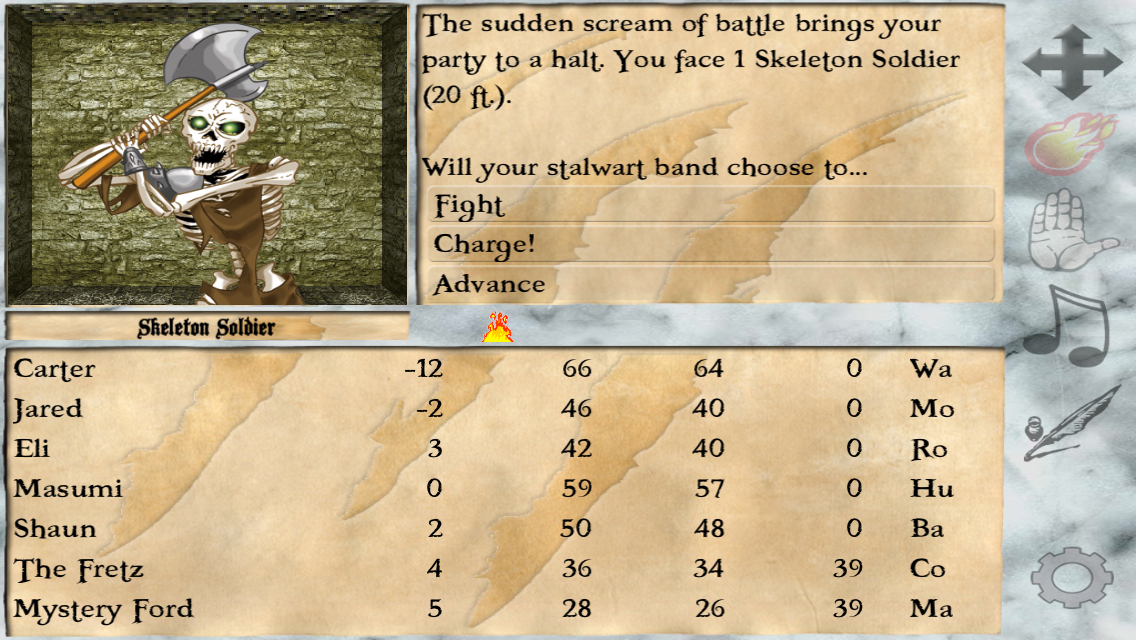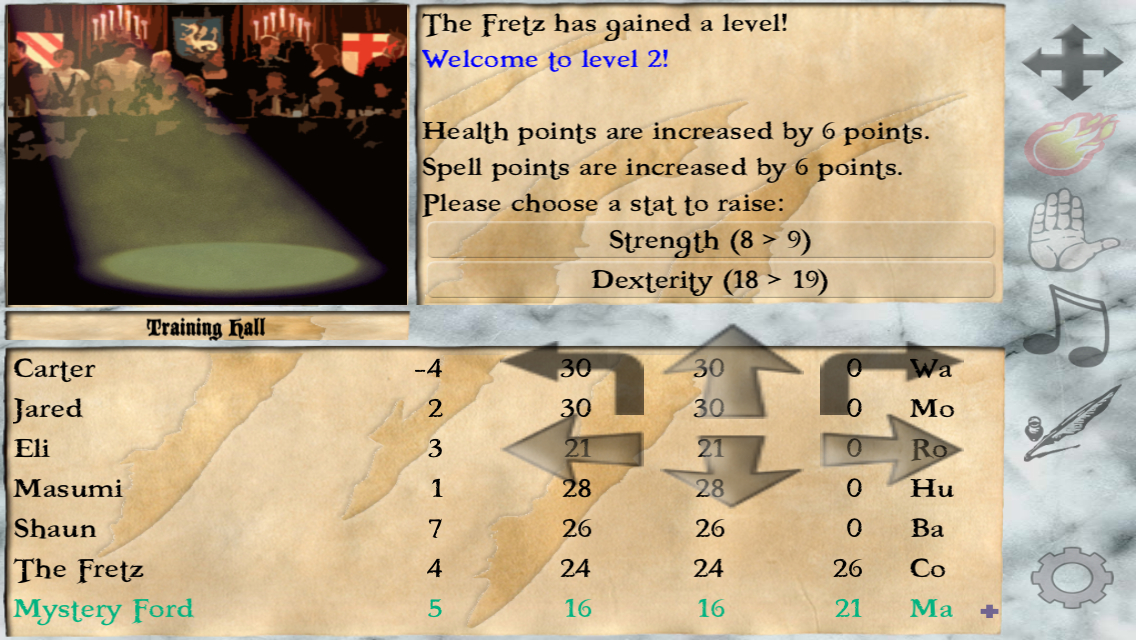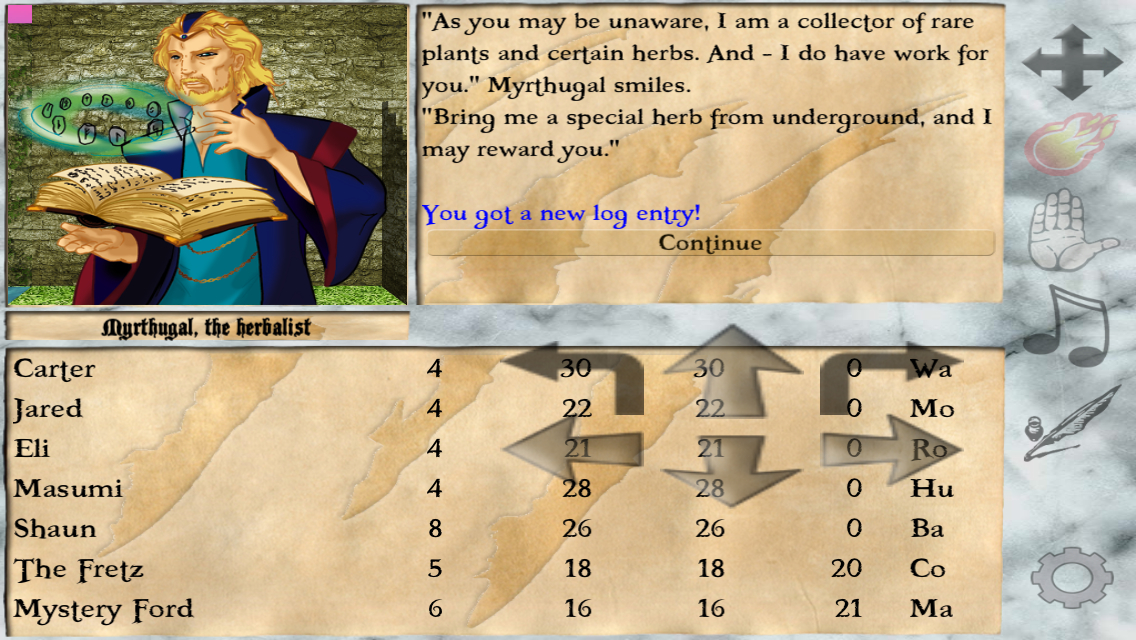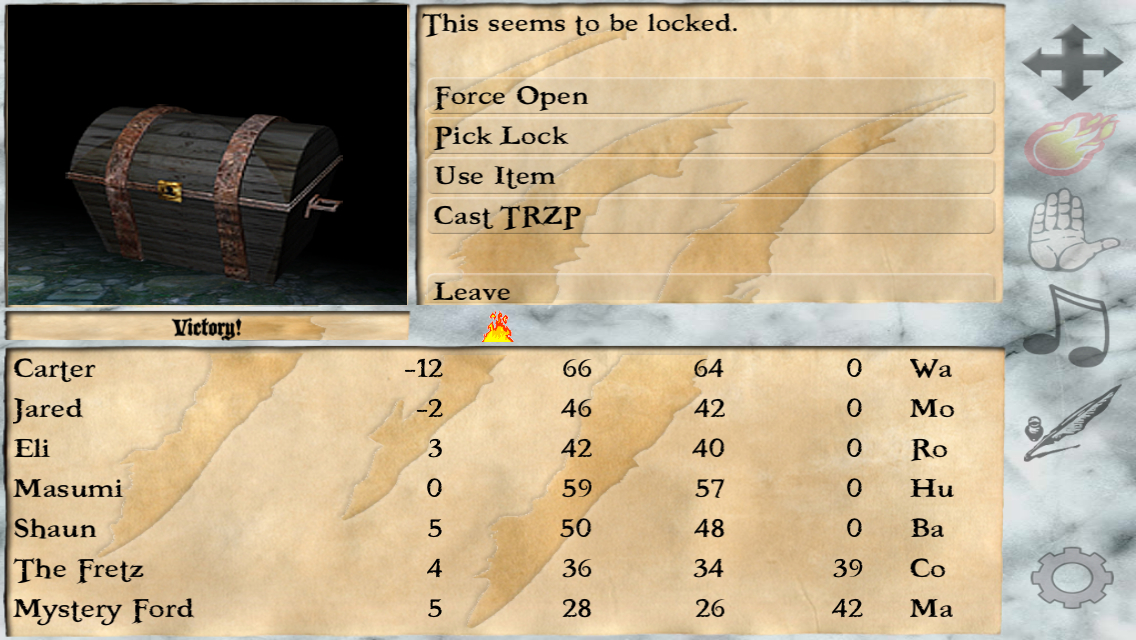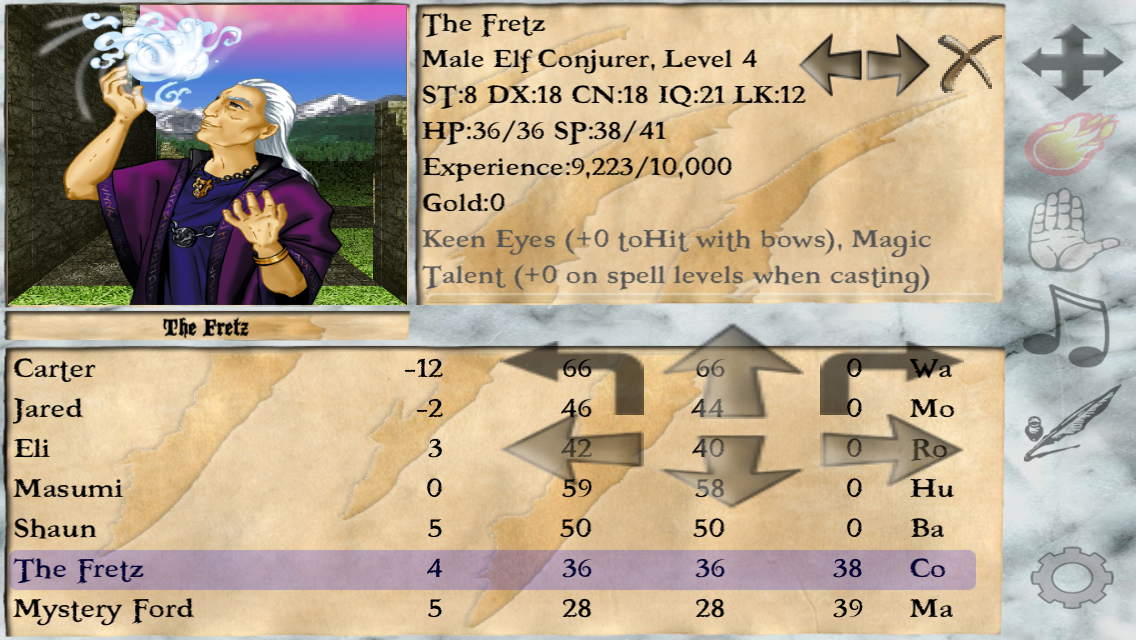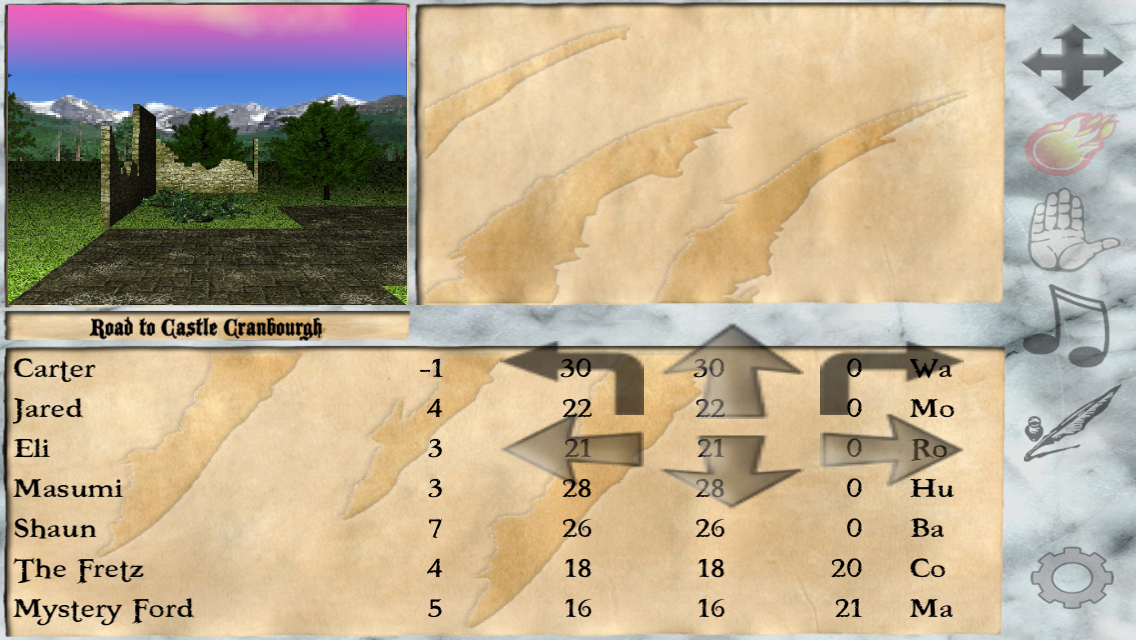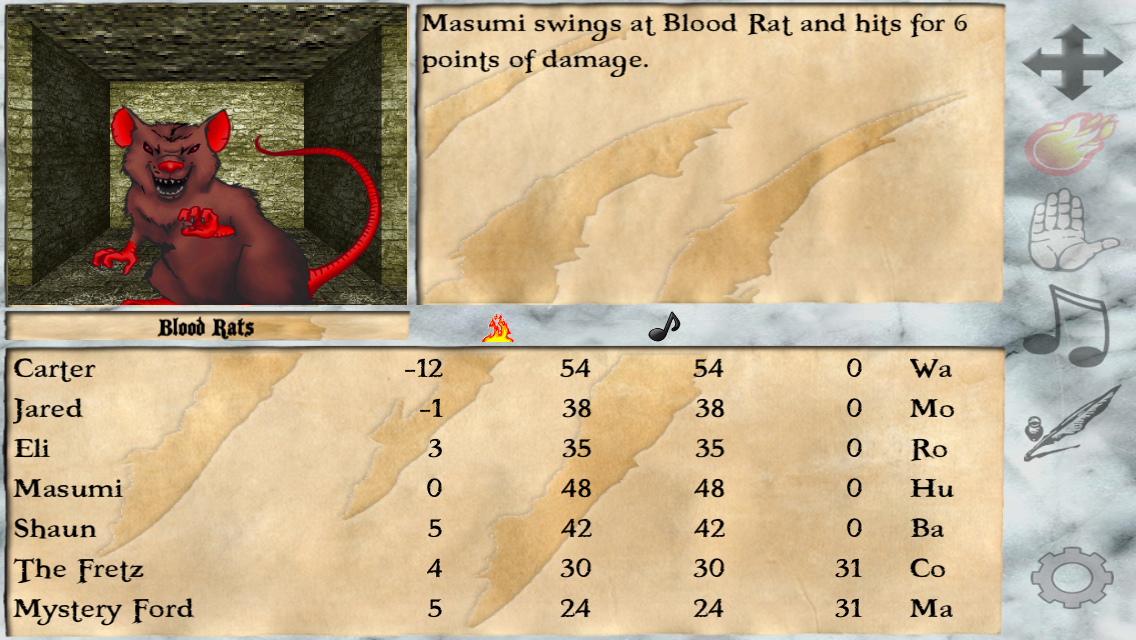 Hello, gentle readers, and welcome to the RPG Reload, the weekly feature where we do our best impressions of our cool uncles. Each week, we take an RPG out of the vaults of the App Store’s past to reflect, revisit, and dive a little deeper than a usual review allows. Most of the time, you are subject to the tyranny of my selections, but in a stunning show of benevolence once per month, you get to choose what I play. Well, not always ‘you’. It could be that guy, or maybe that nice woman over there, or maybe even that weird dog chewing on the tennis ball in the corner. But it might be you! How can this wonderful thing happen, you ask? Simply vote for your choice in the comments below, in the Official RPG Reload Club thread in the forums, or tweet me at @RPGReload, and your selection will be entered into the running. At the end of the month, an appropriate set of dice will be rolled to determine a winner. It’s an RPG solution to an RPG problem!
Hello, gentle readers, and welcome to the RPG Reload, the weekly feature where we do our best impressions of our cool uncles. Each week, we take an RPG out of the vaults of the App Store’s past to reflect, revisit, and dive a little deeper than a usual review allows. Most of the time, you are subject to the tyranny of my selections, but in a stunning show of benevolence once per month, you get to choose what I play. Well, not always ‘you’. It could be that guy, or maybe that nice woman over there, or maybe even that weird dog chewing on the tennis ball in the corner. But it might be you! How can this wonderful thing happen, you ask? Simply vote for your choice in the comments below, in the Official RPG Reload Club thread in the forums, or tweet me at @RPGReload, and your selection will be entered into the running. At the end of the month, an appropriate set of dice will be rolled to determine a winner. It’s an RPG solution to an RPG problem!
After a couple of fun themed months, December’s going to be a little bit weird. You see, friends, my family and I will be taking a two-week trip to the sunny beaches of Canada to spend the holidays in my hometown of Narshe. As it’s a vacation, I can’t maintain the output you guys might be used to seeing from me. As a result, we’re only going to have two more normal RPG Reloads this month, and they don’t follow any particular theme. Worry not, however, as I am going to stuff the stocking with a couple of special RPG Reload features to help tide you over until my return in the New Year. It will be like I was never gone, even though I definitely will be gone, working on my tan as the majestic ice waves come crashing into the snow-covered shores.
So let’s kick off this non-themed month with the reader’s choice selection for December. This time around, we’re looking at Silversword ($3.99), an interesting homage to a game we covered way back in the third RPG Reload article. If you’ve ever found yourself wishing you could have a new Bard’s Tale ($2.99) game, with all the good and some of the ills that come with that, you’re definitely going to want to have a look at this one. Silversword came about because, hilariously enough, there was a time when we didn’t have just about every Bard’s Tale game on iOS. The creator of the game, Mario Gaida, is obviously a massive fan of the Bard’s Tale series and decided to be the change he wanted to see in the App Store. A Lite version of the game was launched in July of 2011, with the full version finally arriving almost six months later. Life being the funny thing that it is, the original Bard’s Tale games would be added soon after to the iOS version of the 2004 Bard’s Tale game, perhaps negating some of the initial motivation behind Silversword‘s creation.
That’s not a bad thing, though, because if anything, it appears to have motivated Gaida to put even more work into his creation, adding significant updates over the years to extend the content, maintain compatibility, and smooth out rough edges in response to player feedback. If you want to play the original Bard’s Tale games on your iOS device, well, you certainly can, though as we learned in File 003, you need to bring a whole pillar of salt with you to overcome some of its, shall we say, traditional leanings. If, on the other hand, you want to play something very much like the original Bard’s Tale games, but would like a new adventure or a few modern niceties, Silversword is here to rub your shoulders and whisper sweet nothings in your ear. Be warned, however, that you’ll still probably need a few packets of salt. This is very much a game in the classic CRPG-style tradition.
On starting the game, you can choose from three different difficulty settings. Now, to tell the truth, this game is long enough as is, so I didn’t have time to try them all, but by the looks of it, Legend mode attempts to preserve the strict saving conditions of The Bard’s Tale, blocks you from using any of the game’s cheat IAPs, and features fixed stat gains on level ups. Modern and Classic offer a more lenient experience and are almost the same except that in Modern, you can distribute your stats as you see fit at the beginning, and you have control over which stat gains a point on each level up. I played through on Modern this time, because I didn’t feel like gaming my dice rolls. The game also advises you to read its hefty manual, and I’ll back up that advice, especially if you haven’t played a CRPG from the era this is inspired by. Even if you have, the manual is enjoyable to read and full of all those little bits of information and details whose inclusion used to be the norm back when humankind was at war with the trees.
As in The Bard’s Tale, you start your journey in a friendly gathering place where you can assemble your party. The game sets you up with a pretty decent default party, so you know what you have to do here. Yes, that’s right, strip them all naked so you can sell their stuff for gold to outfit your real party, then delete their sorry behinds. Once that’s sorted, you can get to making your party proper. In Silversword, your group is made up of seven active members, though it might not be a bad idea to make a few extras just to make sure all of your bases are covered. Standard Wizardry rules apply, so half of your team will be riding up front where they can hit or be hit more easily, while the others have to hang in the back where enemies are out of reach of melee attacks. Basically, you want four characters that can handle frequent direct contact with the enemy for your front row, and squishy utility characters in behind. Don’t forget to pack some casters because, as usual, they’ll become tiny gods in time, and unlike some other classic CRPGs, they’re almost immediately useful.
You’ll find a wide selection of races and job classes to choose from, pretty much sticking exactly to what you would find in The Bard’s Tale, which were themselves almost exactly what you would find in Wizardry, which I guess we could say were almost exactly what you would find in Dungeons & Dragons. I swear, tracking RPG history is like playing the Six Degrees of Gygax sometimes. Each job class has both a male and female portrait, though they don’t go as far as reflecting the race. More importantly, each race has advantages and disadvantages that make them better for certain jobs. Elven hunters are a good idea, halfling warriors perhaps less so. There’s a ton of variety here, and the game isn’t so merciless that you can’t clear it with most decent parties, so feel free to have some fun. Just keep in mind, a little too much fun right now might cause you some pain in a little while.
Once you’ve generated your characters and set out, you’re free to explore the castle town the game starts in. The town has a weapon shop, an armor shop, a healing temple, a bank, and the ever-important training hall where you have to report to in order to level up once you’ve collected enough experience. There are a few other secrets to find around town for the curious explorer. As you walk around getting your bearings, you might notice a little green flicker here and there on your status window. You’ll recover HP and SP (spell points) by walking around in the daylight in Silversword, so as long as you’re patient, you can avoid paying exorbitant fees at the temple to heal. The game is really good about keeping you corralled at this point, only allowing you to encounter your first battle in one of two ways.
If you’re the sort with a go-get-em attitude, you’ll probably discover the first fight by trying to leave the town. The guards will inform you that you need a special badge and tell you where to find it. This might lead you to open up the game’s auto-map for the first time, another welcome concession to modern times. It only shows where you’ve been, so you have to fill it out yourself, but it’s certainly easier than keeping graph paper handy. After checking your map to find the outpost you’ve been directed to, you’ll eventually fight a dwarf who will hand you the badge you need to leave town if you can defeat him. He’s not terribly hard to take down. Interestingly, an update added a second possible way to have your first encounter, and it’s one that clearly tips its hat to the bard. Either way, though, you’ll have to eventually come and beat this fellow. Equipping the badge not only lets you leave town, it also improves your armor class, so it’s win-win.
Now, supposing you’re the methodical type that pokes around every cranny before setting out. You, my friend, will probably find the other possible first battle. Inside the armor shop that’s just on your right if you try to head out of town, the poor shopkeeper is getting terrorized by, of course, giant rats. Silversword has many nods to The Bard’s Tale beyond its mechanics, but this is probably going to be the most obvious one for most RPG fans. Dispose of the rats, and you’re free to shop before heading on your way. Like the dwarf, they’re not very difficult to handle, giving new players the chance to get a handle on the combat. If you were really thorough, you may have even picked up a new weapon or two before this fight, making it even easier.
There’s not much to say about the combat system. It’s essentially a clone of The Bard’s Tale, like most other mechanics in Silversword. You can tell it’s a classic RPG because you and the enemy are going to miss each other more often than not, especially in the early going when your dexterity score might not be all that. Enemy groups can get pretty huge in this game, and you have to keep their distance in mind. Ranged attacks may not do much damage outside of a hunter, but being able to pick away at foes as they approach makes keeping a couple of bows and a few stacks of arrows around at all times a very good idea. Spellcasting just has you choose from a list rather than type out a magic word, and your recently used spells are kept near the top for convenience. The game’s also a bit more lenient about death. Falling to 0 HP simply incapacitates the character, with death only occurring once their negative HP total equals their constitution stat. It’s a little thing, but it helps save gold on resurrections at the temple.
The world outside the castle town is fairly large, with lots of places to travel to. The game has several dungeons that more or less step up along with your level, though you’re likely going to have to grind here and there, even beyond the normal grind that comes from dungeon-plumbing in classic RPGs. NPCs will throw you quests here and there, mostly to retrieve some sort of item or enemy drop, but your overall goal usually comes back to taking down those dungeons, one at a time, until you reach the end. Silversword‘s a very long game, by the way, much longer than The Bard’s Tale, and that’s without even taking its expansion into account. I gave it my best go, but it just wasn’t feasible to finish it before this article had to be written. I’m looking forward to seeing my quest through, however, as the early tough times are far behind my party now and I’m making steady progress.
Usually, the dungeons are the stars of the show in classic CRPGs, which makes sense since the games are usually gussied up dungeon-crawlers. Silversword‘s dungeons are pretty well-designed, though there are a lot of pointless dead-ends and rooms with no meaning beyond housing enemy ambushes. The game actually plays pretty fair considering what it’s paying homage to, but woe be it if you run out of torches or magic flame spells when you’re deep underground. While Silversword makes a lot of concessions in consideration of modern genre advances, you still have to play very cautiously. For much of the game, you need to be careful about whether your condition is good enough to make it out of the dungeon from where you are, since you have to walk back out along an equally perilous path as the one you took in. Each step into the dungeon is another step you have retrace if you need to retreat, but treasure might be waiting just around the next corner, so you might want to risk it. This is the zesty spice that classic CRPGs were drenched in and many modern RPGs lack. Silversword clutches it tightly, like a cherished security blanket dripping with battery acid.
One of the interesting things to me about games that have a very clear inspiration is in what they keep versus what they change. It tells me where the developer’s priorities were, what they actually liked about the source, and who their intended audience is. Silversword‘s main changes include giving you an auto-map, making it easier and cheaper to heal, streamlining the UI without abandoning its core aspects, allowing you to save anywhere, and giving a few more clues about what you need to be doing at any given time. Perhaps more tellingly, it leaves the challenging dungeon exploring, crazy enemy encounters, and classic leveling system firmly in place. You can see how many experience points you need to advance to the next level, but you can’t actually move up a level until you head back to the training hall and get your promotion. Everything Silversword keeps and discards is done with the clear intention to preserve what fans tended to enjoy about those vintage games, while simultaneously making it more convenient and accessible to get at that secret sauce. It’s largely successful in this aim. It doesn’t defang the rattler by any means, but it does remove its poison glands so that you can enjoy getting non-fatally bit again and again. Unless you play on Legend difficulty, that is.
I also applaud the developer’s active development on Silversword. So many games get left behind on the App Store, but Silversword never has been, and hopefully never will be. Any problems are patched quickly and courteously, and while there isn’t much new content being added, the game’s more than substantial enough in its current form. There’s an expansion available as an IAP for $4.99 that adds a new character class and a lot of new stuff to play through, serving as something of a semi-sequel if you’re still hungry after finishing the main game. The game also has other IAPs, including a lovely compendium for $2.99 that’s definitely worth picking up, and a bunch of cheat IAPs for those who want to enjoy an old-school game without clocking in old-school playtimes. I kind of feel like the point of games like this is partially found in the struggle to drag your characters up, so I can’t imagine ever making use of those IAPs, but I guess if you want them, there they are. The game’s most recent update was a mere two weeks before this feature was written, so I think it’s safe to assume the game will be supported for a while yet. Will we ever see a sequel, though, I wonder?
Anyway, if you enjoyed reading my Bard’s Tale write-up but found the game to be just a bit too unfriendly to enjoy in its mobile form, Silversword has your back. This game hits all of the positive points and sands off a few of the negative ones, creating a love letter to the classic CRPG trilogy that also functions well as an entry point for the curious. While it could easily be argued that it lacks an identity to call its own as a result, I think the game’s clear enthusiasm for its metaphorical hero is a sort of identity. And credit where it’s due, the numerous improvements and additions made to Silversword over the years make this unofficial Bard’s Tale game a better experience than the real ones in most regards, especially the emulated mobile versions. I’d give Silversword a solid recommendation to anyone looking for a comfortable medium between the old and the new.
That’s just what I think about Silversword, though. What do you folks think? Is this a loving, enjoyable homage, a shameless bit of adoration from a fan, or something else entirely? Let me know in the comments below, by posting in the Official RPG Reload Club thread, or by firing me off a tweet at @RPGReload. Don’t forget to vote for your choice for the next RPG Reload reader’s choice while you’re at it. As for me, I’ll be back next week with another plate of tasty leftovers. As always, thanks for reading!
Next Week’s Reload Hint: Shaun speak beaver.
